What Is a Good Rowing Pace and Everything You Should Know About Rowing
Author:
Reviewed by:
(21 years of Oly Lifting experience)
Unlock your full potential by engaging with our experts and community! Have questions about your fitness journey or looking for expert advice on weightlifting techniques? Don’t hesitate — leave a comment below and Ihor Shymechko will provide a personalized answer and insights to help you reach your goals.
Torokhtiy is reader-supported. Some links are affiliate links, and we may earn a commission at no extra cost to you. See our disclosure page for details.
Ever wanted to try rowing? For some, it’s a great sport and workout while for others; it’s a lifestyle that’s beneficial for both mind and body. So if you’re wondering what is a good rowing pace, it’s a good idea to understand the different factors involved in the art of rowing. Keep in mind that good rowing times will differ depending on things like your experience as a rower, level of fitness, and even your age.
To answer the question what is a good rowing pace, it’s always a good idea to take a closer look at all the factors. For instance, understand the ideal average speed for your expertise. Beginners in indoor rowing equipment usually have a pace of 2:30-2:45 for every 500 meters. On the other hand, advanced rowing enthusiasts can hit 500 meters at around 2:00 or less.
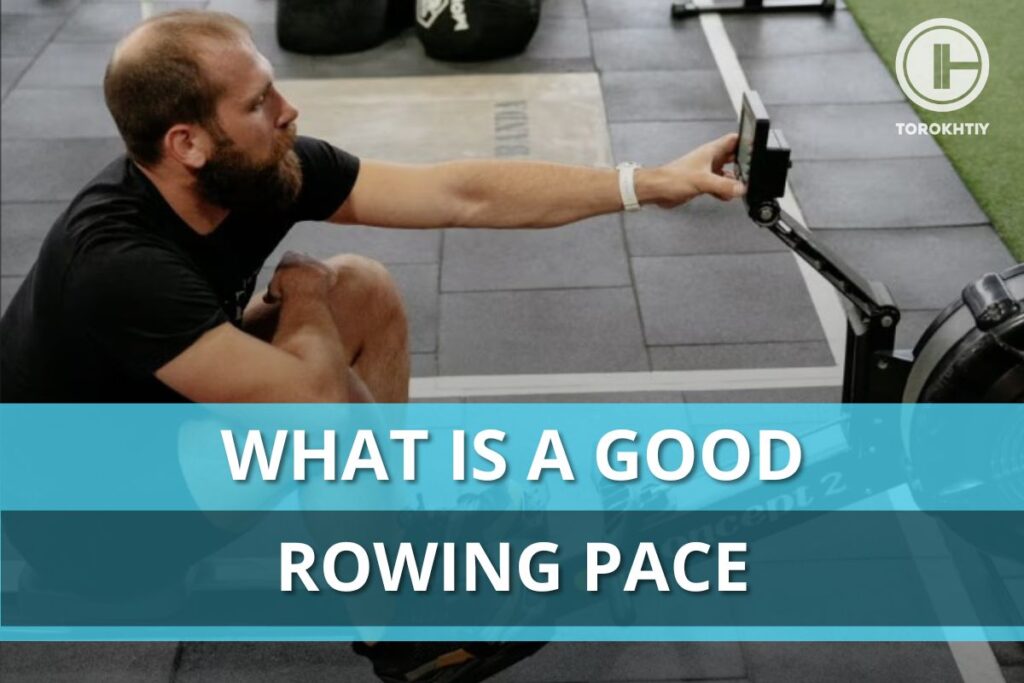
What Is a Rowing Pace?
Rowing pace pertains to different things. It could be the distance you cover on water or on your indoor rowing equipment in relation to time.
For instance, it could be measured in miles or meters per hour. This comes in handy for long-distance rowing.
Another key rowing metric used is the number of strokes per minute or SPM. A common stroke rate is between 24 to 30 strokes per minute. The racing stroke rate tends to be a bit higher. However, it is still usually below 36 SPM.
Then, you have the beats per minute metric used in measuring your heart rate while rowing. Why monitor your heart rate? It has been long established by medical professionals that reducing your resting heart rate is indicative of a healthy cardiovascular system. There’s also a study that discovered that exercise can decrease your resting heart rate.
Now, aside from your resting heart rate, there is the target heart rate. THR is the ideal heart rate during exercise. THR constitutes from 50% to 85% of your maximum safe heart rate. As for the maximum heart rate, you can get it by subtracting your age from 220.
That means that if you’re a 20-year-old individual, you have a maximum safe heart rate of 200 with a target heart rate of anywhere around 100-170 beats per minute.
Nowadays, some rowing machines include heart rate monitors that allow you to know how hard your heart is working based on your exercise. Some rowing machines have their heart monitor by the handle. Unfortunately, you can’t track your heart rate once you step down on your rowing machine, and that is why some users use a separate device for heart rate monitoring.
Follow us!

Free!
Get a 2-week Weightlifting Program as a bonus for the subscription to kickstart your training plan!

Free!
How to Row Properly to Get More Miles/Kilometers?
So how should you row if you wish to knock more distance in every session? There are different training techniques that can improve an individual’s endurance. By doing these training methods, you can cover more distance whenever you’re rowing.
Experts believe that you can improve peak oxygen uptake by doing endurance training. This means training the body to perform certain activities for a long period. On the other hand, short burst exercises such as sprints have a greater effect on the muscle’s glycolytic capacity. It means that it helps the muscles efficiently use their glycogen stores.
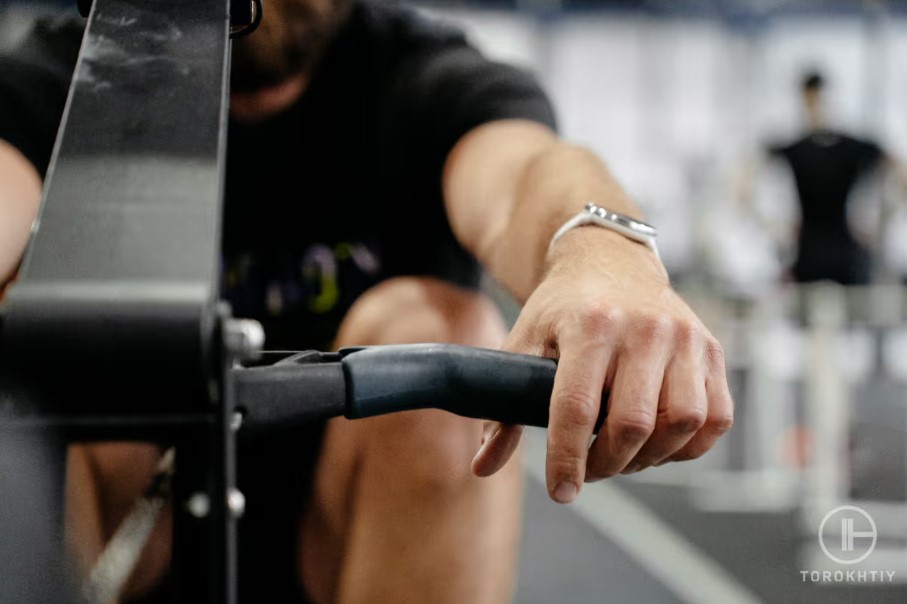
Aside from your cardiovascular endurance, it is important to focus on muscular endurance, as well. Why muscular endurance? Muscular endurance is needed to perform continuous rowing. Expect your grips, back muscles, and legs to work whenever you’re rowing. And to have more distance, you need to make sure that your muscles are up for the work.
And also, it is well documented that aside from allowing the body to perform certain movements, muscle endurance training can also reduce the risks of injuries.
Then, if you’re planning to do long-distance rowing, it is best if you can do polarized training. A study discovered that the best approach is to perform low-intensity, long-distance training to improve overall performance in long-distance rowing events.
1. What Is a Good Rowing Pace for Specific Distances?
The biggest question on people’s minds is what is a good pace when you’re rowing? To understand how pace works, let’s make it clear that you should consider distance when it comes to recording your pace.
For instance, how long does it take to row 500 meters? 500 meters is a good baseline for distance since it can be performed by anyone. Now, age, gender, and fitness level are other factors that can affect how fast or slow you can row 500 meters.
When it comes to age, younger individuals especially teens and individuals in their early 20s tend to have a faster rowing pace. And for gender, since males have a greater muscle mass and testosterone on their side, they usually have a higher rowing pace compared to women.
And as for fitness level, those who are physically fit usually cut the amount of time needed to row 500 meters. Here is a table that gives you an idea of what a good rowing pace is depending on your fitness level.
| Fitness Level | Rowing Pace for 500 Meters |
|---|---|
| Beginner | 2:30-3:00 minutes |
| Intermediate | 2:00-2:30 minutes |
| Advanced | 1:40-2:00 minutes |
There are some instances when specific training can make a difference in someone’s rowing pace. At times, even women can have a better rowing pace than men. And the same for older individuals who are advanced rowers who can beat fit individuals in their 20s.
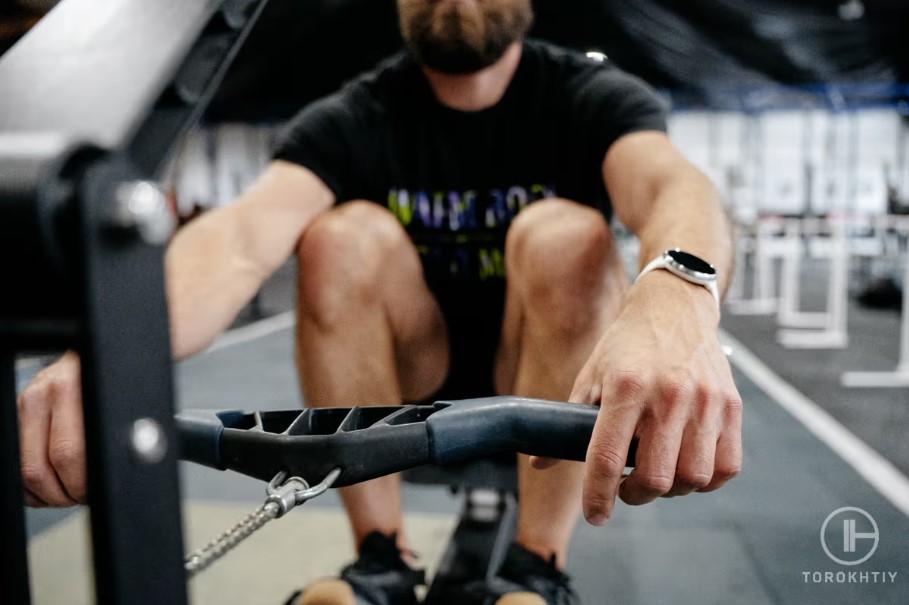
2. What Rowing Pace for Major Distances Is a Good One?
The rowing pace tends to change as the distance gets longer. For an elite athlete, for example, while it’s possible to finish 500 meters in 1 minute and 20 seconds, 2000 meters would mean a slightly slower rowing pace. Even elite athletes tend to finish 2000 meters in around 6 minutes or less. The reason behind this is that they have to sustain their speed throughout the distance.
Here’s a table of a typical elite and recreational athlete’s rowing pace for major distances.
| Distance | Elite Athlete’s Rowing Pace | Recreational Athlete’s Rowing Pace |
|---|---|---|
| 500 Meters | Around 1:20 | 2 minutes or more |
| 1000 Meters | Under 3 minutes | 4-6 minutes |
| 2000 Meters | 6 minutes or less | 7-10 minutes |
| 5000 Meters | 15-17 minutes | 20-30 minutes |
| 10000 Meters | 30-35 minutes | 40-60 minutes |
So how many meters is a good rowing workout? It ultimately depends on what you want to achieve. If you’re looking to hit 10,000 meters and become a good long-distance rower, then you should aim towards reaching that distance regularly. On most days, you should be able to hit 80% of the total distance with ease.
Tips From the Champ
Concept 2 Rower comes as a handy equipment for both pros and those who want to start improving their rowing pace. It comes with an ergonomic design that allows different users to enjoy the machine. Here, you can adjust the footrests according to your height. Plus, the handles are easy to grip.
Olympic Weightlifting Champion
How to Define Your Rowing Pace?
So how do you define your rowing pace? There are different ways on how you can do it. You can start by setting a time and try to cover as much distance given the time period.
A good rule of thumb is to measure your covered distance from 10 minutes, 15 minutes, and 20 minutes if you’re only starting. Then if you’re serious about rowing, you could start measuring your performance from 30 minutes to 1 hour.
If you’re asking yourself how far should I row in 30 minutes? Elite athletes can reach 8000 to 10,000 meters in 30 minutes. Now, you can use this as your gold standard.
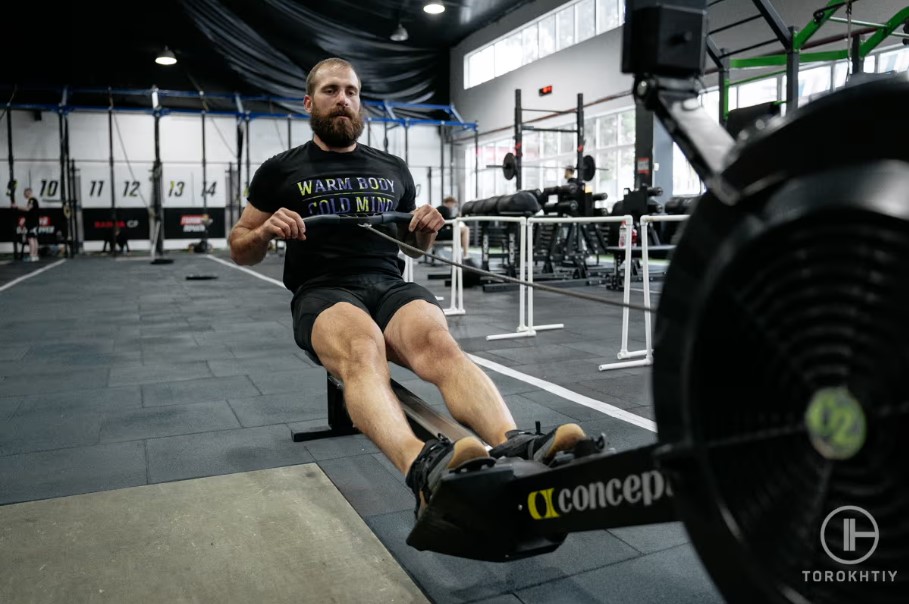
How to Improve Your Rowing Time?
Improving your rowing time requires both hard work and science. One, you need to focus on proper technique. If the technique is done right, you can row efficiently and get less tired. You can also finish with a stronger pull, therefore covering more distance in a short period. If done right, you’ll be able to see a big improvement in your average rowing speed.
Next is to take your strength and conditioning seriously. This helps build the necessary muscle needed in rowing. It means performing pull-ups to strengthen the back muscles, squats to improve your leg muscles, and even some kettlebell swings and bridges to improve your posterior chain. And of course, let’s not forget the grips. Training your forearms allows you to row for a longer period.
Then, there’s proper nutrition that should go hand in hand with your workouts. This will give you the fuel that you need whenever you’re rowing.
Rowing Machine We Recommend – Black Concept 2 Rowerg Rower – PM5
Black Concept 2 Rowerg Rower – PM5
- Item dimensions: 96 L x 24 W x 14/20 H (depending on model) inches
- Item weight: 57 lbs/68 lbs
- Resistance system: Air
- Display: Digital
- Slide rail length: 54 inches
- Weight capacity: 500 lbs
- Compatibility: ErgData app
- Warranty: 5-year frame, 2-year parts
- Additional features: ANT+ & Bluetooth connectivity (heart rate devices), USB flash drive compatibility (data import/export), machine-to-machine racing mode
The Concept 2 Rower comes as a handy equipment for both pros and those who want to start improving their rowing pace. It comes with an ergonomic design that allows different users to enjoy the machine. Here, you can adjust the footrests according to your height. Plus, the handles are easy to grip.
It is made of an aluminum I-beam monorail along with a stainless steel track. It also comes with a flywheel that allows users to use it with minimal noise. This heavy-duty rowing machine can accommodate up to 500 pounds.
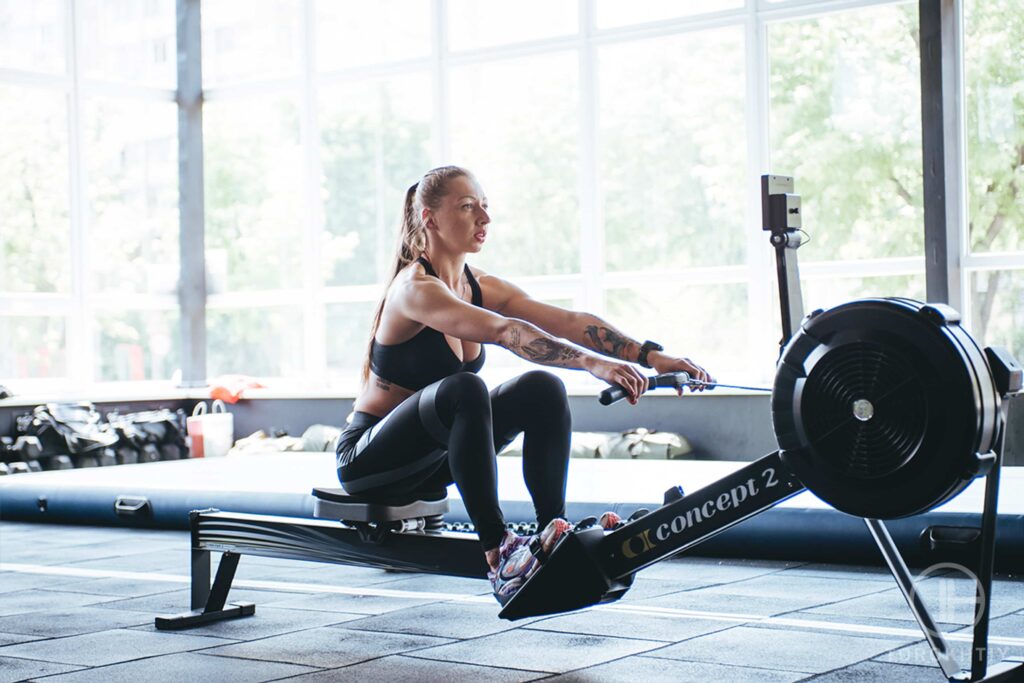
This comes with a PM5 performance monitor showing you the rowing machine pace. It tracks distance, pace, speed, calories you burn, and even watts. You can have it connected wirelessly to your heart rate monitor. Plus, it comes with the optional ErgData app that allows you to record your workout.
It is a good choice even for those with limited space. You can have it in two separate units for easy storage. However, it isn’t perfect. It doesn’t have a lot of built-in workouts to choose from.
FAQ
Is Rowing 5000 Meters In 30 Minutes Good?
Yes. Elite athletes usually finish 5000 meters in around 20 minutes. However, finishing 5000 meters in 30 minutes is a good time. It demonstrates good cardio and pace throughout the entire distance.
Is Rowing 1000 Meters in 5 Minutes Good?
Yes. Elite athletes can knock off 500 meters in under 2 minutes, and 1000 meters at around the 4-minute mark. However, completing 1000 meters in just five minutes is an impressive feat.
How Fast Should I Row 2000M?
Always consider your overall conditioning, age, and your experience as a rower. As a benchmark, elite athletes usually finish this in 6 minutes or less while for recreational athletes, targeting 7-8 minutes is a decent time for 2000 meters.
Conclusion
The rowing pace depends on different factors. Conditioning, age, and your level of expertise are some things that you need to consider if you’re going to set your benchmark. Also, keep in mind that the longer the distance, the slower the pace. This is true not just for recreational athletes but even for elite rowers. And lastly, the equipment you’re using can also affect your performance.
Also read:
- Does Rowing Build Muscle
- How Long Should a Rowing Workout Be
- Types of Rowing Machines
- Rowing Machine for Weight Loss
- How Long Should I Row For
- Air vs Magnetic Rower
- Rowing Machine for Abs
References:
- Effects of Exercise on the Resting Heart Rate: A Systematic Review and Meta-Analysis of Interventional Studies // Ncbi: https://www.ncbi.nlm.nih.gov/pmc/articles/PMC6306777/
- Training techniques to improve endurance exercise performances // Pubmed: https://pubmed.ncbi.nlm.nih.gov/12076176/
- Systematic Review of the Association Between Physical Fitness and Musculoskeletal Injury Risk: Part 2-Muscular Endurance and Muscular Strength // Pubmed: https://pubmed.ncbi.nlm.nih.gov/28796127/
- Physiological analysis of the 100 km indoor rowing World Record // Efsupit: https://www.efsupit.ro/images/stories/september2018/Art%20227.pdf
- Photos made by Torokhtiy Media Team.
Why Trust Us?
With over 20 years in Olympic weightlifting, strength training, nutrition coaching, and general fitness our team does its best to provide the audience with ultimate support and meet the needs and requirements of advanced athletes and professional lifters, as well as people who strive to open new opportunities and develop their physical capabilities with us.
By trusting the recommendations of our certified experts in coaching, nutrition, and sports training programming, as well as scientific consultants, and physiotherapists, we provide you with thorough, well-considered, and scientifically proven content. All the information given in the articles concerning workout programming, separate exercises, and athletic performance, in general, is based on verified data.
The product testing process is described in more detail here.
Author: Ihor Shymechko
Pro Olympic Weightlifter, Coach
Best Results: Snatch – 208 kg,
C&J – 240 kg
Ihor has been a professional weightlifter since 1996, boasting over two decades of competition experience. His notable achievements include clinching the European Championship in 2009 and securing a silver medal in the 105kg division at the Senior World Championships in 2011. Ihor represented his country in the 2008, 2012, and 2016 Summer Olympics. After retiring from competitive weightlifting, he transitioned to coaching, leveraging his vast experience to guide athletes who now compete on both national and international stages.
Reviewed by: Oleksiy Torokhtiy
Olympic Weightlifting Champion, PhD in Sport Science
Best Results: Snatch – 200 kg,
C&J – 240 kg
Oleksiy Torokhtiy is a professional athlete boasting 20 years of experience in Olympic weightlifting. With multiple European and World titles under his belt, he has showcased his prowess in two Olympic Games (Beijing 2008 and London 2012). Upon concluding his illustrious career, Oleksiy dedicated himself to coaching. By 2022, he had conducted over 200 weightlifting seminars worldwide. He is the visionary behind an international sportswear and accessories brand known for its motto, “Warm Body Cold Mind.” Additionally, he is an esteemed author and the creator of a series of training programs and eBooks.






Still have questions after reading our article? Unlock your full potential by engaging with our experts and community! Don’t hesitate — leave a comment below and Ihor Shymechko will provide a personalized answer and insights to help you reach your goals.